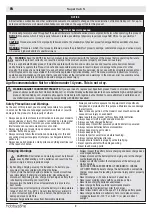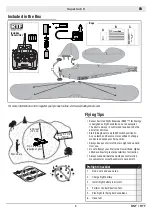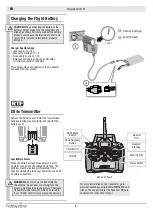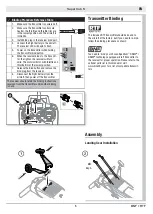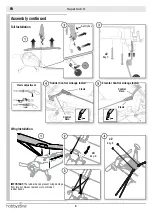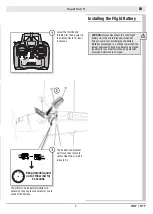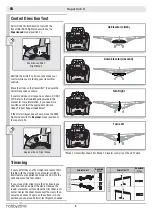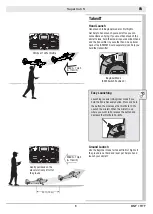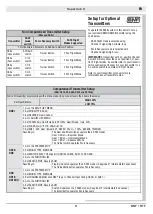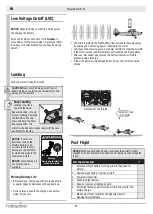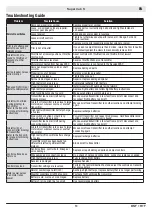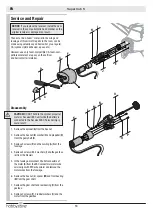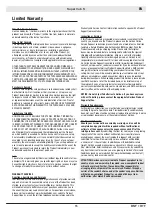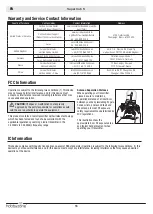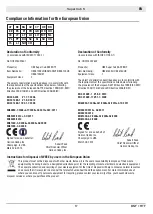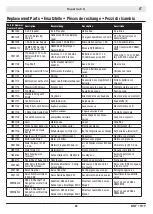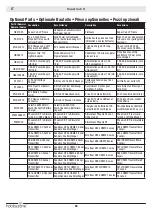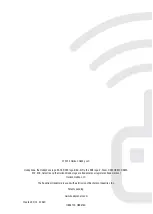
EN
12
®
Super Cub S
Always
decrease throttle at
propeller strike.
Low Voltage Cutoff (LVC)
NOTICE:
Repeated fl ying to when the motor pulses
will damage the battery.
For your fi rst fl ights, set a timer for
7 minutes
to
avoid fl ying until the motor pulses. Adjust your timer
for longer or shorter fl ights once you have fl own the
aircraft.
Landing
Land the aircraft in Beginner mode.
CAUTION:
Never catch a fl ying aircraft in your
hands. Doing so could cause personal injury and
damage to the aircraft.
Easy Landing
Landing is easier if
you hold the Panic
Recovery button. Line up
for your landing, decrease
the throttle to 0% and
press and hold the Panic
Recovery button. The
aircraft will glide down wings level with the nose
up (fl ared) for landing.
NOTICE:
If a crash is
imminent, reduce the
throttle. Failure to do
so could result in extra
damage to the airframe,
as well as damage to the
receiver and motor.
NOTICE:
Crash damage is
not covered under
warranty.
Prolong Battery Life
• Before storage, charge your battery to about half
capacity. Capacity decreases with use and age.
• During storage, ensure the charge does not fall
below 3V per cell.
Post Flight Checklist
1. Disconnect fl ight battery from the aircraft. (Required for
Safety)
2. Remove fl ight battery from the aircraft.
3. Power off transmitter.
4. Recharge fl ight battery.
5. Repair or replace all damaged parts.
6. Store fl ight battery apart from the aircraft and monitor the
battery charge.
7. Make note of fl ight conditions and fl ight plan results,
planning for future fl ights.
Wind 0–7 mph
(0–11km/h)
Descends at 0% throttle
CH 5
Post Flight
NOTICE:
When you are fi nished fl ying, never leave the aircraft in direct
sunlight or in a hot, enclosed area such as a car. Doing so can damage the
foam.
• The aircraft protects the fl ight battery from accidental over-discharge
by applying LVC, removing power supplied to the motor.
• LVC causes the motor to pulse, but power remains to steer the aircraft.
• If the motor pulses, land immediately and recharge the fl ight battery.
• After use, disconnect and remove the battery from the aircraft to
prevent trickle discharge.
• If the Li-Po battery is discharged below 3V per cell, it will not hold a
charge.


